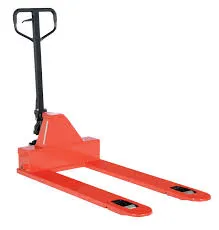


Understanding the Working Principle of Chain Hoists
Chain hoists are indispensable tools in various industries, providing efficient solutions for lifting heavy objects. Understanding their working principles can enhance safety and efficiency in their use. This article delves into the mechanisms and principles behind chain hoists, emphasizing their applications and importance.
Understanding the Working Principle of Chain Hoists
The working mechanism can be described through the concept of mechanical advantage. When the user pulls on the hand chain, it turns a sprocket that is connected to the load chain. This interaction between the hand chain and the sprocket translates the user’s exerted force into lifting power. The gears and pulleys are designed to multiply this force, enabling the hoist to lift heavy weights efficiently. For instance, if a hoist has a gear ratio of 41, pulling the hand chain four times results in a one-time lift of the load chain, meaning the weight lifted is significantly greater than the force applied by the user.

Safety is a primary concern when using chain hoists. Each hoist is equipped with a braking system that prevents the load from descending uncontrollably. This brake engages when the operator releases the hand chain, locking the load in place. High-quality chain hoists utilize a friction brake or a pawl and ratchet mechanism, ensuring that the load remains secure even when the hoist is not actively being operated. This safety feature is critical in preventing accidents, especially in industrial environments where heavy loads are common.
Chain hoists can be classified into different categories, including manual, electric, and pneumatic variations. Manual chain hoists, or lever hoists, rely on human strength to lift loads, making them suitable for environments where electricity is unavailable or excessive mobility is required. Electric chain hoists are powered by motors, offering a higher lifting capacity and increased efficiency for repeated lifting tasks. Pneumatic hoists use air pressure to lift loads, making them ideal for explosive or sensitive environments where electric sparks pose a danger.
Applications of chain hoists are vast and varied. They are used in construction, manufacturing, shipping, and maintenance tasks. In construction, chain hoists help lift steel beams and other materials to high elevations. In manufacturing, they are often employed to assemble large machinery parts or transport heavy items along assembly lines. In the shipping industry, chain hoists facilitate the loading and unloading of cargo from ships and trailers.
In conclusion, the working principle of chain hoists revolves around the interplay between the hand chain, load chain, and mechanical components that allow for efficient lifting of heavy loads. Understanding their functionality not only enhances operational efficiency but also reinforces safety measures in workplaces. With their versatility and effectiveness, chain hoists remain a critical component in various industrial applications, enabling workers to handle heavy objects with confidence and ease. Whether manual, electric, or pneumatic, these tools exemplify the combination of engineering ingenuity and practical application that drives modern industry.



